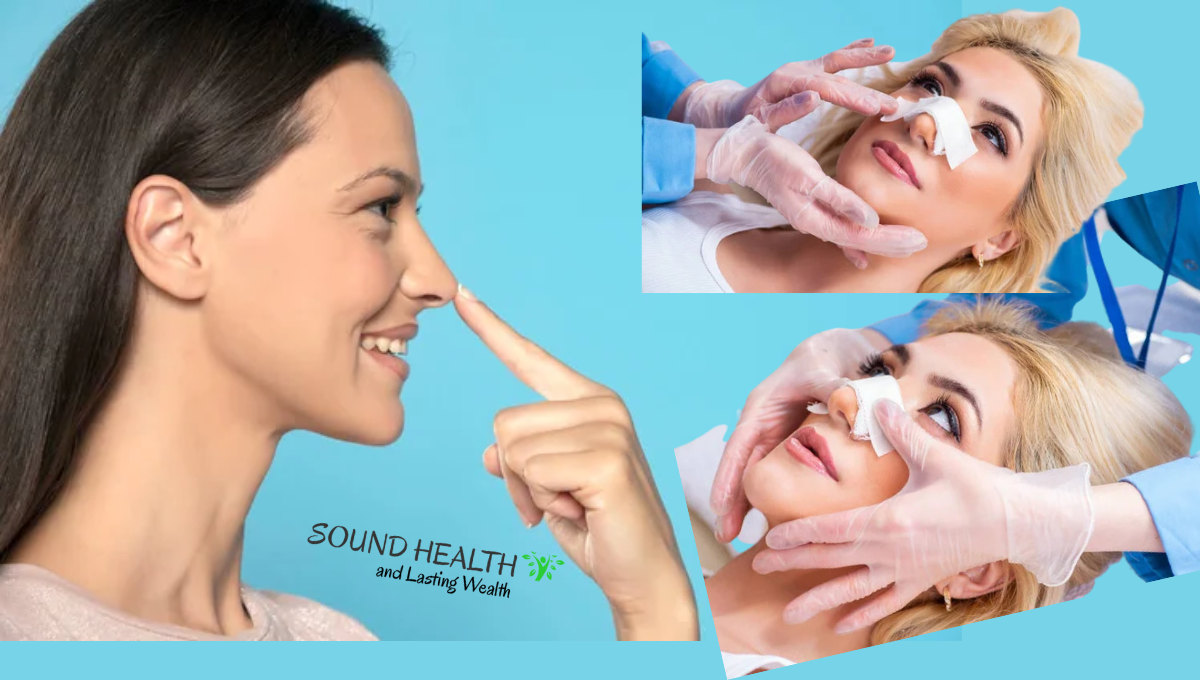With the information here, get to know if Rhinoplasty is dangerous for you. Rhinoplasty, also known as a nose job, is a surgical procedure that reshapes the nose to improve its appearance and, in some cases, improve breathing function. It is a common cosmetic procedure, with over 300,000 performed in the United States each year. People perform this surgery for various reasons, such as; aesthetic concerns, functional problems, and reconstruction. So for whichever reason you may have to get a rhinoplasty done, it’s important to abreast your knowledge with answers to some popular questions before making that decision.
In this article, Sound Health and Lasting Wealth will answer 10 of the most common FAQs about rhinoplasty, so you can make an informed decision about whether or not it’s right for you.
1. Is Rhinoplasty Dangerous?
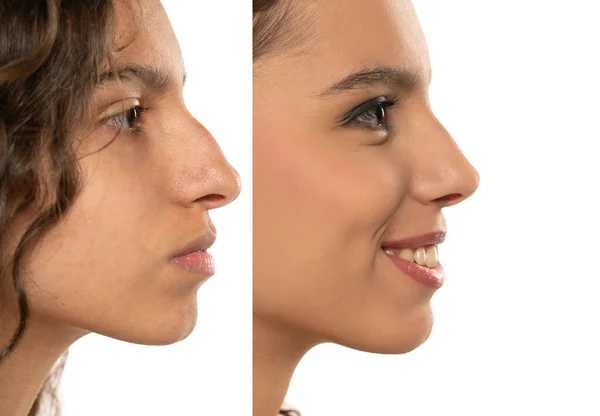
While rhinoplasty is generally considered a safe procedure when performed by a qualified surgeon, there are some risks associated with it that make it appear dangerous, you can call them the side effects of rhinoplasty if you want. These risks include:
- Bleeding: Bleeding is a common complication of rhinoplasty, and it can usually be controlled with medication. However, in some cases, it may be necessary to return to the operating room to stop the bleeding.
- Infection: Infection is another potential complication of rhinoplasty, and it can occur at the incision site or inside the nose. Infection is usually treated with antibiotics, but it can sometimes lead to serious complications, such as sepsis.
- A bad reaction to anesthesia: Anesthesia is always a risk, and there is a small possibility of having a serious reaction to it. However, this is rare, and most people tolerate anesthesia well.
- Difficulty breathing: In some cases, rhinoplasty can cause difficulty breathing. This can be due to swelling, scarring, or changes in the structure of the nose. If difficulty breathing is severe, it may require additional surgery.
- Poor wound healing or scarring: Poor wound healing or scarring can occur after any surgery, including rhinoplasty. However, it is more common in people with certain medical conditions, such as diabetes or lupus.
- Possibility of revisional surgery: Not everyone is satisfied with the results of their first rhinoplasty. In some cases, revisional surgery may be necessary to achieve the desired results.
- Skin discoloration and swelling: Skin discoloration and swelling are common side effects of rhinoplasty. They usually resolve on their own within a few weeks, but they can sometimes last for several months.
- Unsatisfactory nasal appearance: It is important to have realistic expectations about the outcome of rhinoplasty. The goal of surgery is to improve the appearance of the nose, not to create a perfect nose.
The overall risk of complications from rhinoplasty is low, but it is important to discuss the risks and benefits of surgery with your surgeon before you make a decision. You should also make sure that your surgeon is board-certified and has experience performing rhinoplasty.
2. Who is a good candidate for rhinoplasty?
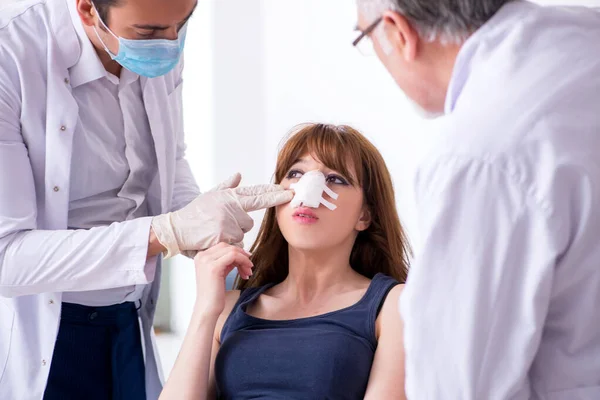
Determining whether or not you are a good candidate for rhinoplasty involves a comprehensive assessment of your physical and emotional well-being, along with a thorough understanding of your cosmetic goals. Here’s a detailed breakdown of the factors considered:
-
Physical Health: Rhinoplasty is an elective surgical procedure, and as such, it’s crucial to ensure your overall health is in good standing. This means being free from any medical conditions that could hinder the healing process or pose additional risks during surgery. Uncontrolled diabetes, heart disease, and lung conditions like pneumonia are among the concerns that would require careful consideration by your surgeon.
-
Smoking Cessation: Smoking is a significant risk factor for rhinoplasty complications, primarily due to its detrimental impact on wound healing. Smoking constricts blood vessels, reducing oxygen flow to the surgical site and delaying the healing process. Additionally, smoking increases the likelihood of infection and tissue necrosis, further compromising the outcome of the procedure. Therefore, quitting smoking is strongly recommended for at least six weeks before and six weeks after rhinoplasty.
-
Emotional Stability and Realistic Expectations: Rhinoplasty is a transformative procedure that can significantly alter your facial appearance. It’s essential to approach this decision with emotional stability and realistic expectations. Understand that rhinoplasty is not a guarantee of achieving a specific look or altering your overall attractiveness. Instead, it’s about enhancing your facial harmony and improving your self-confidence.
-
Specific and Achievable Goals: Before embarking on rhinoplasty, clearly define your cosmetic objectives. What specific aspects of your nose do you wish to modify? Do you seek subtle refinements or a more dramatic transformation? Having clear goals allows your surgeon to tailor the procedure to your unique needs and preferences.
-
Positive Outlook and Adherence to Instructions: A positive attitude and willingness to follow the surgeon’s instructions are crucial for a successful rhinoplasty experience. This includes adhering to pre-operative and post-operative care guidelines, such as maintaining a healthy diet, avoiding strenuous activities, and keeping the surgical site clean and protected.
-
Skin Thickness: The thickness of your skin plays a significant role in determining the outcome of rhinoplasty. Thin skin can make it challenging to achieve a natural-looking result, as it may reveal underlying irregularities or imperfections in the nasal structure. Thicker skin, on the other hand, provides more flexibility and allows for more precise sculpting.
-
Nasal Structure: The complexity of your nasal structure also influences the candidacy for rhinoplasty. Some noses are inherently more challenging to reshape due to their unique anatomical features. For instance, noses with severe deformities or extensive scar tissue may require more complex surgical techniques.
-
Patient’s Age: Rhinoplasty is generally not recommended for individuals under the age of 16, as the facial structure, including the nose, is still undergoing development during adolescence. Waiting until the nose has reached its mature form ensures a more stable and predictable outcome.
In conclusion, determining candidacy for rhinoplasty requires a comprehensive evaluation of your physical health, emotional well-being, cosmetic goals, and individual anatomical factors. Consulting with a board-certified plastic surgeon is essential to thoroughly assess your suitability for the procedure and discuss your specific needs and expectations.
3. Is rhinoplasty painful during and after surgery?

Rhinoplasty is typically performed under general anesthesia, which means you will be completely asleep during the procedure. This ensures that you will not experience any pain while the surgery is being performed.
Once the anesthesia wears off, you may experience some discomfort in your nose and around your eyes. This is due to the swelling and bruising that are common after rhinoplasty. You may also feel a bit of pressure in your nose, as it is typically packed with gauze to control bleeding and keep the tissues in place.
Most patients find that the pain after rhinoplasty is mild to moderate and can be managed with over-the-counter pain medication such as ibuprofen or acetaminophen. Your surgeon may also prescribe a nasal spray or drops to help reduce swelling and congestion.
The majority of rhinoplasty patients experience a significant reduction in swelling and bruising within the first few weeks after surgery. You may still experience some swelling and tenderness for several months, but this should gradually improve over time.
The final results of rhinoplasty are not usually visible for up to a year after surgery. This is because it takes time for the swelling to completely subside and for the new cartilage and bone to settle into place.
4. What Is a rhinoplasty operation procedure like?

The rhinoplasty procedure typically takes 1-3 hours and is performed under general anesthesia, meaning you will be completely asleep during the procedure. The specific steps involved in the procedure will vary depending on the individual’s needs and goals, but generally, the process involves:
-
Incision: The surgeon will make an incision either inside your nose (closed rhinoplasty) or across the base of your nose, between the nostrils (open rhinoplasty).
-
Reshaping the nose structure: The surgeon will carefully reshape the bone and cartilage of your nose to achieve the desired shape. This may involve removing bone or cartilage, adding cartilage from another part of your body, or using implants.
-
Correcting a deviated septum: If your septum is deviated, the surgeon may straighten it to improve your breathing.
-
Closing the incision: The surgeon will close the incision with sutures or stitches.
5. What foods should I avoid before a rhinoplasty procedure?

To ensure a smooth and successful rhinoplasty procedure, it’s crucial to follow your surgeon’s pre-operative instructions carefully. This includes adhering to a specific diet that avoids certain foods that can interfere with the procedure. Here’s a list of foods you should avoid before rhinoplasty:
-
Foods that interfere with blood clotting: These include foods rich in vitamin E, such as almonds, avocados, and leafy green vegetables; supplements like vitamin E, fish oil, and ginkgo biloba; and certain herbal teas, such as chamomile and ginseng.
-
Salty foods: Excessive salt intake can lead to water retention and exacerbate swelling after surgery. Limit your consumption of processed foods, salty snacks, and condiments.
-
Alcohol and caffeine: Alcohol and caffeine can act as diuretics, further increasing the risk of dehydration and interfering with blood clotting. Avoid consuming alcohol and caffeine at least two weeks before surgery.
-
Hard and crunchy foods: These can be difficult to chew and may cause discomfort or even pain after rhinoplasty. Stick to soft, easily digestible foods during the pre-operative period.
-
Spicy foods: Spicy foods can irritate your digestive system and potentially worsen post-operative swelling. Avoid spicy dishes for at least a week before surgery.
-
Acidic foods: Acidic foods, such as citrus fruits, tomatoes, and vinegar, can trigger inflammation and slow down healing. Limit your intake of these foods before surgery.
-
Foods high in sugar: Excessive sugar consumption can impair immune function and impede the healing process. Avoid sugary drinks, processed snacks, and desserts.
Remember to consult with your surgeon for specific dietary recommendations based on your individual needs and medical history.
6. What Is recovery from rhinoplasty like?
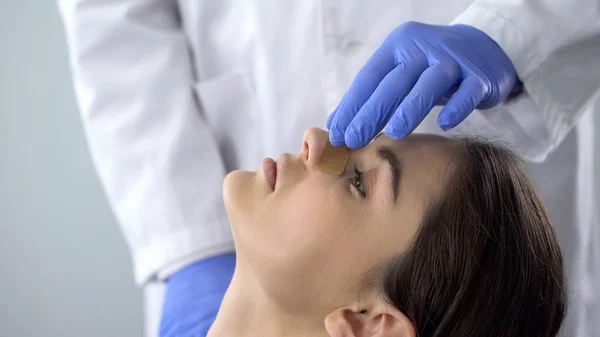
After rhinoplasty, you will be taken to a recovery room where you will be monitored until you are fully awake. You will then be able to go home with a trusted adult who can assist you with your care.
The recovery process from rhinoplasty typically involves:
- Resting at home for a few days to allow your body to heal.
- Wearing a splint on your nose for 1-2 weeks to support the new shape and prevent movement.
- Applying ice packs to reduce swelling and discomfort.
- Taking pain medication as prescribed by your surgeon to manage any discomfort.
- Avoiding strenuous activity for several weeks to prevent complications.
- Refraining from blowing your nose for several weeks to avoid disturbing the healing process.
- Avoiding wearing glasses for several weeks to prevent discomfort and pressure on the nose.
7. What food should I avoid after a rhinoplasty procedure?
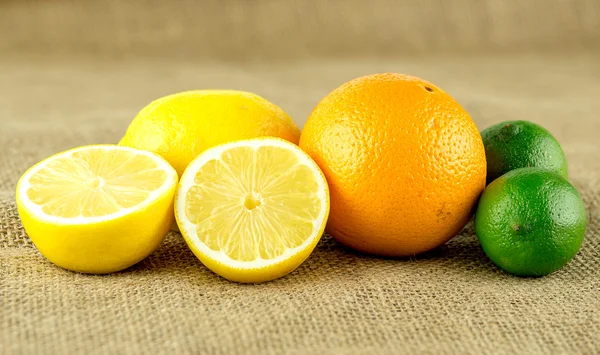
To facilitate a smooth recovery and minimize the risk of complications following rhinoplasty, adhering to specific dietary guidelines is essential. Here’s a list of foods to avoid after rhinoplasty:
-
Hard and Chewy Foods: Avoid foods that require strenuous chewing, as this can strain the healing tissues in your nose and cause discomfort or pain. Steer clear of tough meats, nuts, raw vegetables, and hard candies.
-
Spicy Foods: Spicy foods can irritate your digestive system and potentially aggravate post-operative swelling. Limit or avoid consuming spicy dishes for at least a week after the procedure.
-
Acidic Foods: Acidic foods, such as citrus fruits, tomatoes, and vinegar, can trigger inflammation and slow down the healing process. Minimize the intake of these foods during the early stages of recovery.
-
Foods High in Sugar: Excessive sugar consumption can impair immune function and hinder wound healing. Avoid sugary drinks, processed snacks, and desserts to promote optimal recovery.
-
Salty Foods: High sodium intake can lead to water retention and exacerbate swelling after surgery. Limit your consumption of processed foods, salty snacks, and condiments.
-
Alcohol and Caffeine: Alcohol and caffeine can act as diuretics, increasing the risk of dehydration and interfering with blood clotting. Avoid consuming alcohol and caffeine for at least two weeks after surgery.
-
Foods that Interfere with Blood Clotting: These include foods rich in vitamin E, such as almonds, avocados, and leafy green vegetables; supplements like vitamin E, fish oil, and ginkgo biloba; and certain herbal teas, such as chamomile and ginseng.
-
Hot and Very Cold Foods: Extreme temperatures can irritate the delicate tissues in your nose and cause discomfort or pain. Stick to lukewarm or room-temperature foods during the initial recovery period.
-
Foods that Cause Gas or Bloating: Gas and bloating can put unnecessary pressure on your nose and lead to discomfort. Avoid foods that commonly cause these digestive issues, such as beans, lentils, broccoli, and cabbage.
-
Foods that Require Blowing Your Nose: Blowing your nose after rhinoplasty can disrupt the healing process and increase the risk of nosebleeds. Avoid foods that make you sneeze or cause congestion, such as spicy dishes and dairy products.
Remember to consult with your surgeon for specific dietary recommendations tailored to your individual needs and medical history.
8. Is rhinoplasty permanent?

Yes, rhinoplasty is considered a permanent procedure, as the bones and cartilage of the nose are reshaped during the surgery. This means that the changes to the nose are typically expected to last a lifetime. However, there are some factors that can affect the longevity of the results, such as:
-
Overall health: A healthy lifestyle, including a balanced diet, regular exercise, and adequate sleep, can help to promote healing and overall well-being, which can contribute to the longevity of rhinoplasty results.
-
Skin thickness: Thicker skin can mask small imperfections in the underlying bone structure, making the results of rhinoplasty appear more natural and lasting.
-
Careful follow-up care: Following the surgeon’s instructions for post-operative care, including avoiding strenuous activity, wearing a splint, and applying ice or cold compresses, can help to reduce swelling and promote healing, which can also contribute to the longevity of results.
-
Recurrent trauma: Repeated injuries to the nose, such as from falls or sports, could potentially alter the shape of the nose and require additional surgery.
In general, rhinoplasty is a very successful procedure with high rates of patient satisfaction. However, it is important to have realistic expectations about the results, as there will be some swelling and bruising immediately after surgery, and the final results may not be fully visible for several months. It is also important to choose a board-certified plastic surgeon who has experience performing rhinoplasty and who can discuss your individual needs and expectations with you.
9. What Is the difference between surgical and non-surgical rhinoplasty?

Surgical and non-surgical rhinoplasty are both procedures that can be used to reshape the nose. However, they differ in their invasiveness, permanence, and cost.
Surgical rhinoplasty is a more invasive procedure that involves making incisions in the skin and making changes to the bone and cartilage of the nose. This procedure can be used to make a variety of changes to the nose, including:
- Resizing the nose
- Changing the shape of the nose
- Correcting a bump on the bridge of the nose
- Straightening a crooked nose
- Improving breathing
Surgical rhinoplasty is a permanent procedure.
Non-surgical rhinoplasty, also known as liquid nose job or filler rhinoplasty, is a less invasive procedure that involves injecting dermal fillers into the nose to smooth out bumps, fill in depressions, and create subtle changes to the shape of the nose. Non-surgical rhinoplasty is a temporary procedure performed under local anesthesia and takes about 30 minutes, and patients can typically resume their normal activities immediately after the procedure. The results typically last for 6 to 12 months.
Here is a table summarizing the key differences between surgical and non-surgical rhinoplasty:
Please note that this is just a general guideline, and the best way to decide which type of rhinoplasty is right for you is to consult with a board-certified plastic surgeon.
10. Is rhinoplasty worth it?
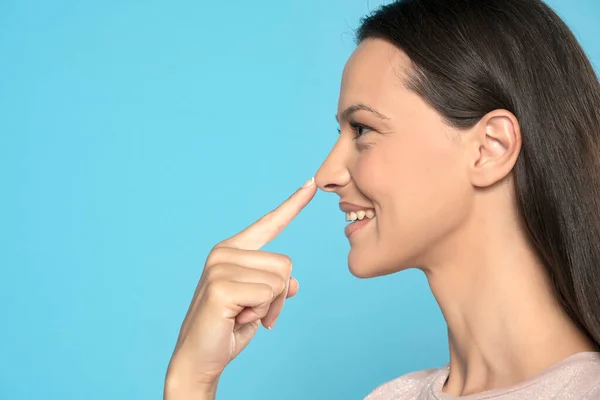
The conclusion of whether having a rhinoplasty is worth it or not is entirely up to you. With the answers to popular questions provided here, we trust and believe in whatever decision you make after reading.
Check out some celebrity nose Jobs
Additional Q & A
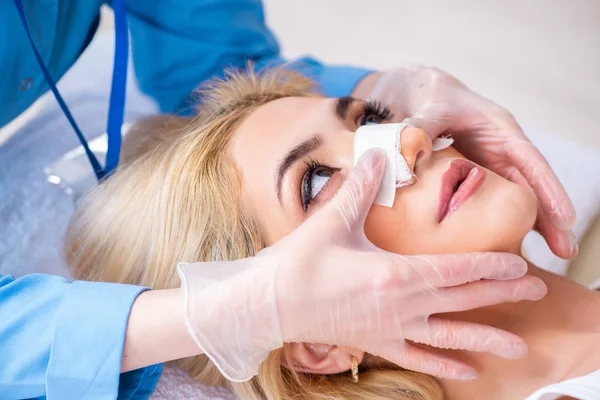
What are the types of rhinoplasty?
There are six primary types of rhinoplasty, each tailored to address specific concerns and achieve desired outcomes.
1. Open Rhinoplasty: Open rhinoplasty involves an external incision across the columella, the narrow strip of skin separating the nostrils. This approach provides the surgeon with unobstructed access to the entire nasal structure, enabling more precise and extensive modifications. Open rhinoplasty is typically recommended for complex procedures that require significant reshaping of the nasal bones or cartilage.
2. Closed Rhinoplasty: Closed rhinoplasty, also known as endonasal rhinoplasty, utilizes incisions hidden inside the nostrils, leaving no visible external scars. This approach is preferred for less extensive modifications, such as refining the tip of the nose, reducing the dorsal hump, or correcting minor asymmetries. Closed rhinoplasty is considered less invasive than open rhinoplasty and offers a shorter recovery time.
3. Tip Plasty: Tip plasty focuses exclusively on reshaping the tip of the nose. It can be used to address various concerns, such as enlarging or reducing the tip, refining its definition, or correcting asymmetry. Tip plasty can be performed as a standalone procedure or in conjunction with other rhinoplasty techniques.
4. Septorhinoplasty: Septorhinoplasty combines cosmetic rhinoplasty with functional septoplasty to address both aesthetic and breathing concerns. It is commonly performed to correct a deviated septum, a condition where the cartilage dividing the nostrils is crooked. Septorhinoplasty straightens the septum, improving airflow and enhancing both nasal aesthetics and function.
5. Revision Rhinoplasty: Revision rhinoplasty is a secondary rhinoplasty procedure performed to address unsatisfactory results from a previous rhinoplasty surgery. It can involve complex modifications to correct issues like scarring, asymmetry, or persistent breathing difficulties. Revision rhinoplasty requires a skilled surgeon with extensive expertise in corrective nasal surgery.
6. Non-Surgical Rhinoplasty: Non-surgical rhinoplasty, also known as liquid rhinoplasty, is a minimally invasive procedure that utilizes injectable fillers to reshape the nose without incisions. Fillers can be used to add volume to specific areas, smooth out bumps, and correct minor asymmetries. Non-surgical rhinoplasty offers temporary results, typically lasting 12 to 18 months.
The choice of surgical rhinoplasty technique depends on the patient’s specific goals, the complexity of the desired changes, and the surgeon’s assessment. A thorough consultation with a qualified plastic surgeon is essential to determine the most appropriate procedure and achieve the desired aesthetic and functional outcomes.
Who does rhinoplasty?
Rhinoplasty is a highly specialized procedure that should only be performed by a qualified surgeon. In general, rhinoplasty is performed by one of the following types of surgeons:
-
Plastic surgeons: Plastic surgeons are surgeons who are trained to perform a variety of cosmetic and reconstructive procedures, including rhinoplasty. They have completed a rigorous training program in plastic surgery, and they are board-certified by the American Board of Plastic Surgery (ABPS).
-
Facial plastic surgeons: Facial plastic surgeons are a subspecialty of plastic surgeons who specialize in the surgical and non-surgical treatment of the face and neck. They are trained to perform a variety of procedures on the face, including rhinoplasty, blepharoplasty (eyelid surgery), and facelifts.
-
Otolaryngologists (ENTs): Otolaryngologists are medical doctors who specialize in the diagnosis and treatment of ear, nose, and throat (ENT) disorders. Some otolaryngologists also have additional training in plastic surgery, and they may perform rhinoplasty as part of their practice.
It is important to choose a qualified surgeon for rhinoplasty, as this will help to ensure that the procedure is performed safely and effectively. When choosing a surgeon, you should consider the following factors:
- Board certification: Make sure that the surgeon is board-certified by a reputable organization, such as the ABPS or the American Academy of Facial Plastic and Reconstructive Surgery (AAFPRS).
- Experience: Ask the surgeon about their experience performing rhinoplasty. A surgeon with a lot of experience in this procedure is more likely to have the skills and expertise to achieve the desired results.
- Portfolio: Ask the surgeon to show you their portfolio of rhinoplasty results. This will give you an idea of their surgical style and the types of results they can achieve.
- Consultation: It is important to have a consultation with the surgeon to discuss your goals for the procedure and to ask any questions you may have. The surgeon should be able to explain the procedure in detail, the risks and benefits, and the expected recovery time.
How do you go about choosing a rhinoplasty surgeon?
Choosing the right rhinoplasty surgeon is crucial for achieving the best possible results and minimizing the risk of complications. When selecting a surgeon, consider the following factors:
- Board certification: Ensure the surgeon is certified by the American Board of Plastic Surgery (ABPS).
- Experience: Choose a surgeon with extensive experience in rhinoplasty.
- Communication: Select a surgeon you can communicate effectively with and who understands your goals and expectations.
- Reviews: Read reviews from previous patients to gain insights into the surgeon’s expertise and patient care.
Rhinoplasty is a complex procedure that requires a high level of skill and expertise. Consulting with a qualified and experienced plastic surgeon is essential for achieving a successful outcome.
What are some of the benefits of rhinoplasty?
Cosmetic benefits of rhinoplasty:
-
Improves facial harmony: Rhinoplasty can make the nose more proportional to the rest of the face, creating a more balanced and harmonious appearance.
-
Enhances facial features: Rhinoplasty can correct specific nose imperfections, such as a bump on the bridge, a crooked septum, or large nostrils, making the overall facial features more attractive.
-
Boosts self-confidence: People who are unhappy with the appearance of their nose may experience low self-esteem and social anxiety. Rhinoplasty can address these concerns, leading to increased confidence and a more positive self-image.
Functional benefits of rhinoplasty:
-
Improves breathing: Rhinoplasty can correct structural defects in the nose that obstruct airflow, making it easier to breathe through the nose.
-
Relieves sinus problems: Rhinoplasty can alleviate chronic sinus problems by opening up blocked nasal passages and improving sinus drainage.
-
Reduces snoring: Rhinoplasty can reduce or eliminate snoring by addressing structural issues that contribute to airway obstruction during sleep.
-
Corrects birth defects: Rhinoplasty can correct congenital birth defects of the nose, such as cleft lip or palate, improving both function and appearance.
What questions should I ask my surgeon before having rhinoplasty?
Some questions to ask your surgeon before having rhinoplasty include:
- What are your qualifications?
- How much experience do you have performing rhinoplasty?
- What are the risks of rhinoplasty?
- What is your typical recovery time?
- What is your fee?
What are some of the alternatives to rhinoplasty?
Here are some alternatives to rhinoplasty:
Injectable fillers: Injectable fillers, such as hyaluronic acid or collagen, can be used to temporarily reshape the nose. Fillers can be used to augment the nose, smooth out bumps, or lift the tip of the nose. The effects of fillers are temporary, typically lasting 6 to 12 months.
Non-surgical rhinoplasty: Non-surgical rhinoplasty, also known as liquid rhinoplasty, is a minimally invasive procedure that uses ultrasound or radiofrequency waves to reshape the nose. Non-surgical rhinoplasty is less invasive than traditional rhinoplasty, but the results are also less dramatic and may not be permanent.
Nasal tip shaping: Nasal tip shaping is a procedure that can be used to refine the shape of the nasal tip. This procedure may involve cartilage grafts, sutures, or fillers.
Septoplasty: Septoplasty is a procedure that is performed to correct a deviated septum, which is a condition in which the cartilage that divides the nostrils is bent or off-center. Septoplasty can improve breathing and may also improve the appearance of the nose.
Revision rhinoplasty: Revision rhinoplasty is a procedure that is performed to correct the results of an unsatisfactory rhinoplasty. Revision rhinoplasty can be more complex than a primary rhinoplasty, and it is important to choose a surgeon who has experience in revision rhinoplasty.
These are just a few of the alternatives to rhinoplasty. The best option for you will depend on your individual needs and goals. It is important to consult with a qualified plastic surgeon to discuss your options and determine the best course of treatment for you.
Resources:
1. (PDF) Rhinoplasty – Researchgate
2. Corrective Rhinoplasty – ScienceDirect
3. Cosmetic Rhinoplasty – ScienceDirect
Note: This article is written based on scientific evidence found by the soundhealthandlastingwealth.com team. Sources are duly referenced and hyperlinked to source websites and are clickable for confirmation.

